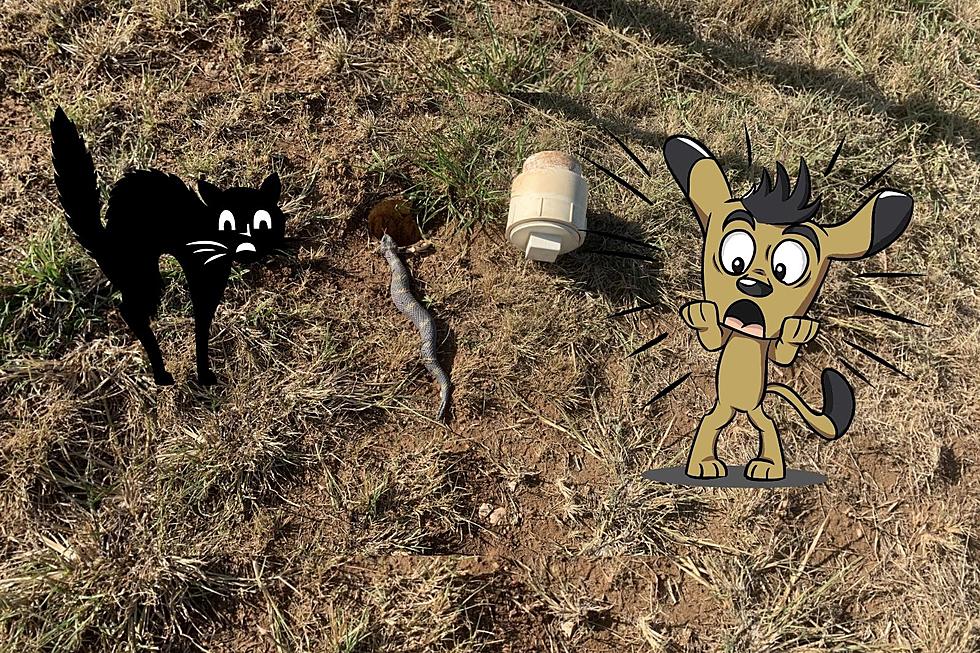
Rattlesnake Safety Tips From the Texas Parks and Wildlife
With the Sweetwater Jaycees Rattlesnake Round up almost here and with spring just weeks away. It's time to brush up on some snake safety tips, here's a list of 'What to Do' and 'What Not to Do' from the Texas Parks and Wildlife Department. As an avid outdoors-man I learned something new from these lists, see what all you know.
First off I believe one should never assume anything when it comes to wildlife, this includes snakes. For example, I've been out hunting and hiking on cold West Texas days when most people say snakes are dormant and have seen snakes moving around. That said, here are the Texas Parks and Wildlife Tips, Dos and Don'ts.
Tips on What to Avoid
- 1. Keep the lawn around your home trimmed low. Remove any brush, wood, rock or debris piles from around your home, they make great hiding places for snakes and their prey rodents.
- 2. Always wear shoes while outside and never put your hands where you cannot see them.
- 3. Be careful when stepping over fallen logs and big rocks.
- 4. Take care along creek banks and underbrush.
Snakes do not prey on humans and they do not chase humans, in fact they usually retreat or escape if given the opportunity. Do not play around with a dead snake, they have been known to bite.
What to Do
- 1. If bitten, assume envenomation has occurred, especially if initial symptoms are not present. Initial symptoms include fang puncture marks; in addition, immediate burning pain at the bite site, local swelling and local discoloration of the skin.
- 2. Identify the species of snake that inflicted the bite, if possible, taking care to avoid another person being bitten. Identification is not necessary, but may be helpful.
- 3. Keep victim as calm as possible. This helps reduce the spread of venom and the onset of shock.
- 4. Be alert for the symptoms of shock, and institute the proper treatment. Difficulty in breathing and/or kidney failure are frequent symptoms of envenomation.
- 5. Wash the bite area with a disinfectant if available.
- 6. Remove jewelry such as rings and watches, as well as tight-fitting clothes, before the onset of swelling.
- 7. Reduce or prevent movement of a bitten extremity, using a splint if possible. For the same reason, position the extremity below the level of the heart.
- 8. Get the victim to a medical facility as soon as possible.
Learn to recognize the different snake species in our area. Most snake bites occur when people take unnecessary or foolish risks. Understanding what snakes like for suitable habitat, their behavior and where you might encounter one will help you avoid an encounter. Finally remember, snakes do like tall grass.
What Not to Do
- 1. Do not make incisions over the bite marks. This can result in significant damage to already traumatized tissue.
- 2. Do not use a tourniquet or other constricting ban except in extreme cases of envenomation.
- 3. Do not use cryotherapy like cold compresses, ice, dry ice, chemical ice packs, spray refrigerants, and freezing.
- 4. Do not use electroshock therapy.
- 5. Do not drink alcohol, as it dilates blood vessels and helps spread venom faster.
- 6. Do not use aspirin or related medications to relieve pain, because they increase bleeding.
- 7. Do not use the pressure/immobilization technique, which consists of firmly wrapping the entire limb with an elastic bandage.
- 8. Do not administer antivenom in the field unless evacuation to a medical facility will take many hours or days. Acute allergic reactions to antivenom can occur.
Source: Texas Parks and Wildlife
If you would like to learn more about snakes or more safety tips, check out the Texas Parks & Wildlife website.
More From KEAN 105






![Check Out the Size of These Rattlesnakes Caught North of Lawton, Oklahoma [PHOTOS]](http://townsquare.media/site/153/files/2016/03/Rattlesnake-Oklahoma.jpg?w=980&q=75)

![Rattlesnake It’s Whats for Dinner [VIDEO]](http://townsquare.media/site/114/files/2012/03/Rattle-Snake-coiled-up.jpg?w=980&q=75)
